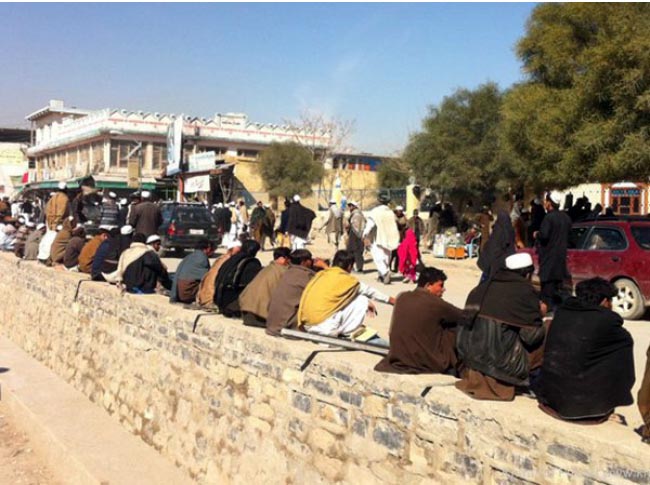Though unemployment is a common issue that affects many countries, and to a larger extent the least developed nations and causes widespread poverty, social unrest, and one of the major reasons for insurgency in some countries, including Afghanistan. Afghanistan comes in the list of top 20 countries with high unemployment where the unemployment rate is estimated around 40%. Slow and volatile GDP (Gross Domestic Product), low rate of investment, lack of government support to private sector, high population growth rate, repatriation of millions of migrants, lack of security, limited access to education, quality of education are some of the factors that have contributed to the high unemployment rate in the country. Afghanistan is one of the countries with low HDI (Human Development Index); the literacy rate is below 36%. The literacy is reported to be 32% in men and only 13% in women.
Economic activities extremely decreased and put continuous upward pressure on poverty, declining job opportunities and growing social disorders. The currency exchange rate enormously depreciated against US dollar while the goods ’s tremendously increased against Afghani Currency. On the one hand, foreign aid have decline, which makes foreign currency more valuable vis-à-vis the Afghani. On the other hand, growing uncertainty around the political and security environment have caused demand for Afghani to decline; both through consumer’s preference to retain their savings in US dollar, and through lower capital inflows which naturally increase demand for foreign currency.
CSO (Central Statistic Office) figures show about 12 million people qualify as workers in the country. But The Ministry of Labour and Social Affairs have new figures that show about 7 million people need to find full-time work. Approximately Sixty percent of Afghan workers are jobless, and those who are employed rarely have the assurance of regular working hours in a safe environment while their average monthly wages are not crossing the ceiling of 5,000 Afs, which is below a sustenance levels.
Growing joblessness among the youth is fuelling internal displacement, illegal immigration and insecurity. The worsening violence and economic situation have forced hundreds of families to move to other parts of the country and abroad. After Syria and Iraq, with 68,000 migrants Afghanistan got third place in the world in 2015. Many of them had sold their major properties such house, shop or vehicle because of lack of job prospects and worsening poverty. And now the hopelessness is rising to finding regular work and fear for their safety because of the violence caused by continuing war in the country.
In fact, there is a strong correlation between large numbers of unemployed cohorts and political violence. When young people – particularly young men – are uprooted, jobless, intolerant, alienated, and have few opportunities for positive engagement, they represent a ready pool of recruits for groups seeking to mobilize violence such as the Taliban. Widespread youth unemployment carries effects beyond the individuals who can not find jobs. The consequences can threaten a nation’s wider economy and stability. The implications of these high rates are devastating for the country’s economy and stability. Afghanistan has one of the highest illiteracy rates in the world. More than 11 million Afghans over the age of 15 cannot read or write. These young illiterate Afghans have no better alternatives for the high unemployment in the country but to migrate or to join the insurgent groups.
Unemployment in Afghanistan is destructive for its economy and security conditions. Lack of jobs in the country has led thousands of young Afghan migrating to the neighboring countries, where they can be abused, exploited, tortured, trafficked, addicted and humiliated.
Labor migration has possibly created a remittance dependent economy. However, those jobless teenagers who actually can not meet the expense of escaping the unemployment remain in the country and relocate from one region to another where they can find jobs. This is the group of people who are endangering the security situation of Afghanistan. According to the interviews, surveys, and reports done by different media, and international institutions, most of these emigrants start to either return back to their farmlands or join the Taliban extremist groups. There are those who are willing to farm agricultural crops, but due to food aid inflow that lowered the price of agricultural products, they are unable to compete in the market. The best alternative they have is opium poppy. Opium production is fueling the insurgents, and flaming the instability in the country. It is a lucrative crop compare to any other product that the farmers can grow. However, Taliban and other extremist groups smuggle opium to neighboring countries and sell it at a higher price. This trade is the most beneficial and earns high revenue for the insurgents. The revenue is empowering the enemy of Afghanistan in fighting against the foreign and domestic troops. Unemployment is a very useful recruiting tool for the Taliban to engage the Afghan youths in the fight against the government and its people. According to media reports jobless and uneducated young people in Afghanistan have few opportunities for positive engagement, they represent a ready pool of recruits for groups seeking to mobilize violence such as the Taliban. Unemployment has a positive effect on the rise of violence in Afghanistan.
Home » Opinion » Unemployment Crisis!
Unemployment Crisis!
| Mohammad Zahir Akbari

